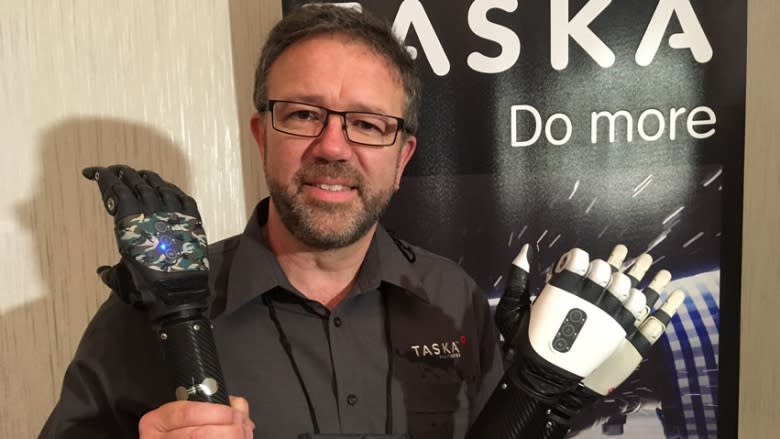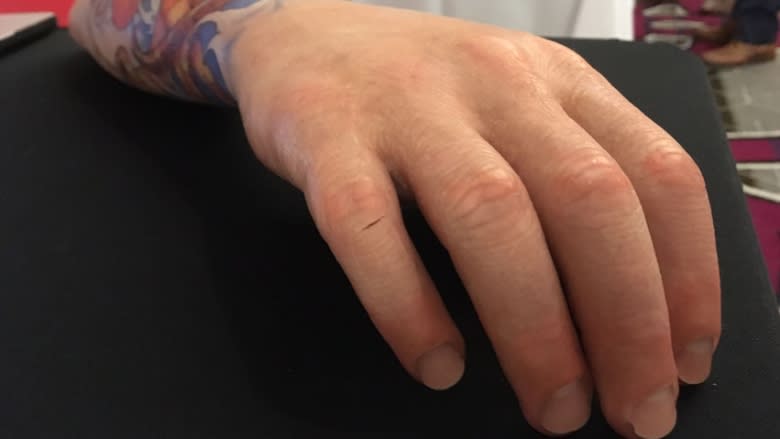High-tech prosthetics on display at Fredericton symposium
An engineer who lost his right hand, left arm, part of his feet and a lot of his skin to a meningitis infection 10 years ago has drawn on that experience to help improve the design of prosthetic devices.
George Levay says when the options were presented to him, they were more about cosmetics than functionality.
"I couldn't believe how bad they were," said Levay, who was in Fredericton on Tuesday for a symposium on limb prosthetics using myoelectric controls.
- UNB engineering students designing prosthetic golf arm
The symposium is hosted by the University of New Brunswick every three years.
Levay, who is from Hungary, was on scholarship studying engineering in the United States when he got sick.
"It was a pretty rough experience," he said.
But he transitioned to studying biomedical engineering and is now a consultant with Baltimore-based Infinite Biomedical Technologies, specializing in improving the control between mind and machine.
"I can open the hand, and close it, and rotate the hand and I can extend and bend the elbow," he said, demonstrating an arm and hand powered by bendable batteries.
The arm must learn and remember the signals his body sends to the non-existent limb.
"What I'm actually trying to do is open my non-existent hand, but the algorithm inside recognizes it, and opens it for me," he said.
Although the technology has improved dramatically over the years, the metal appendages covered with fake skin are still a long way from being as good as the real thing, said David Rioux.
"I can't button a shirt," said Rioux, who lost the lower part of his arm in a farming accident six years ago. "So buttoning a shirt is like the bane of my existence."
His replacement arm is also wearing out, so he attended the symposium to explore options for a new one.
"What I'm looking for is something that is more durable, that will last longer than the one I have," he said.
Mathew Jury, an engineer and inventor from New Zealand, thinks he might have the answer. He has designed what he says is a tougher hand — and the first one that's waterproof.
Breaking both his arms in a mountain biking accident prompted Jury to start tinkering with myoelectric hands. The problem was, they kept breaking down, he said.
So seven years ago, he decided he would try and build a more robust one.
"The best way to test the hand is to give it to an ex-military amputee, because they will break it in hours," said Jury. "And that's great, because you get to see what's going to last and what's not, real quick."
The symposium continues all week.





